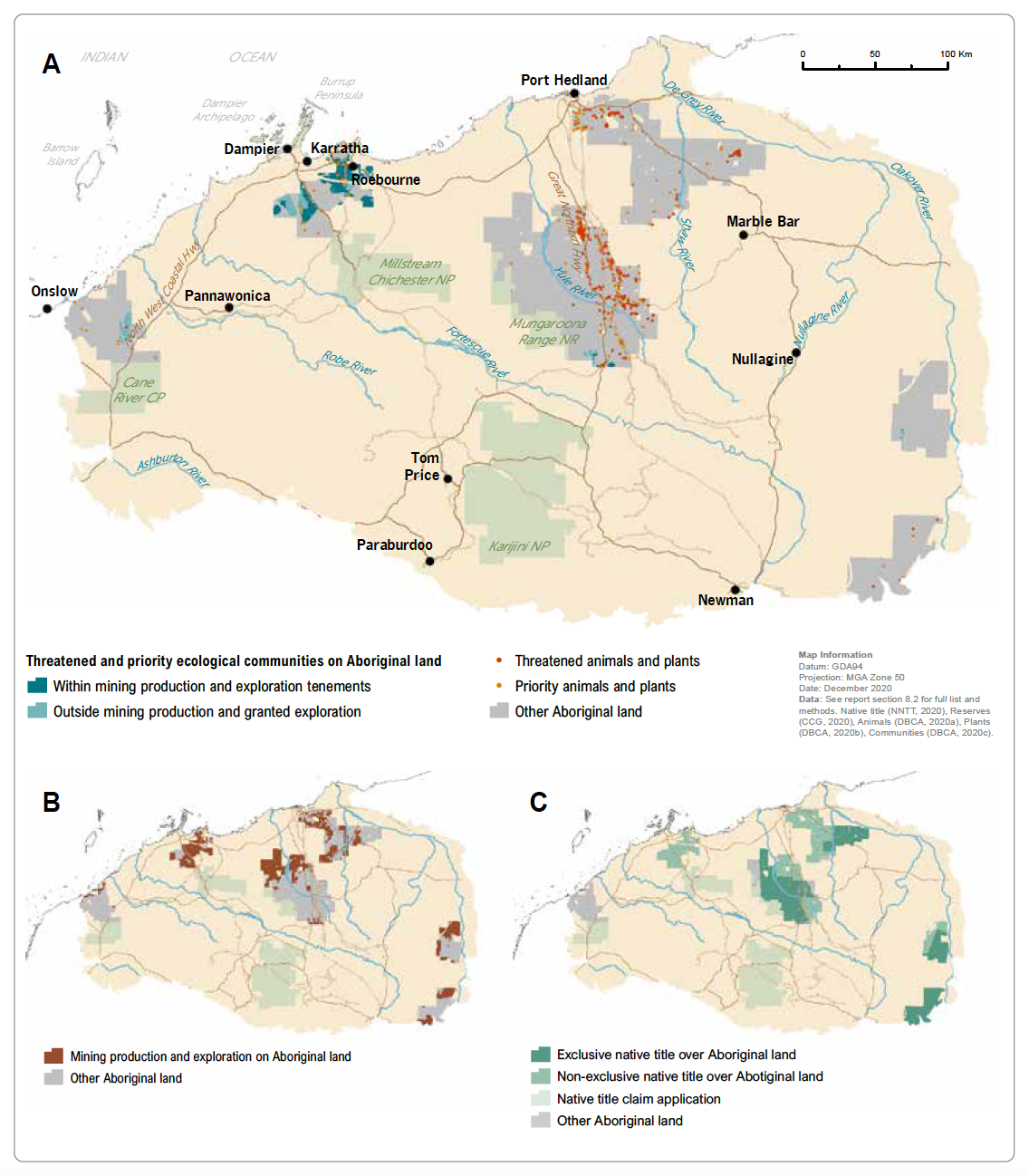Land currently managed by Aboriginal people in the Pilbara covers about 2 million hectares (11.5% of the region). It includes pastoral leases, land held by the Aboriginal Lands Trust, and the Woodstock Abydos Protected Reserve.
With the exception of areas excised for mining infrastructure, the Woodstock Abydos reserve is a protected area, held by the Western Australian Government since a lease held by the Mumbultjari Aboriginal Corporation was revoked in 2006. The Budadee Aboriginal Corporation, with support from the Palyku-Jartayi Aboriginal Corporation, operates a ranger team on Woodstock Abydos for the purpose of protecting its ‘cultural and environmental integrity’ and have prepared an environmental management plan. Environmental work has included surveys of significant species, feral animal monitoring and removal, weed control, seed collection and the identification of culturally significant places for rehabilitation.
On other Aboriginal-managed properties – most of which are pastoral properties (covering 7.8% of the Pilbara) – a lack of resources for Indigenous rangers has limited the capacity for large-scale conservation management.

Conservation opportunities
Indigenous-led conservation management
With more support for Indigenous ranger teams and healthy country planning, much more of this Aboriginal-managed land category could be managed to protect the conservation and cultural values. As elsewhere, the priority threats requiring management are likely to be invasive animals, weeds and fire, as well as grazing pressure on pastoral lands. There is potential for funding support from the environmental offsets fund, particularly on Woodstock Abydos.
Indigenous protected areas
IPAs are ‘areas of land and sea managed by Indigenous groups as protected areas … through voluntary agreements with the Australian Government’. Australia has 78 IPAs, making up about 46% of the National Reserve System. But there are none in the Pilbara – likely due to capacity constraints on Traditional Owners (in part due to a necessary focus on protecting cultural heritage from mining) as well as limited federal funding for the IPA program.
Some Traditional Owner groups have expressed a desire to establish IPAs. The successful Nyangumarta Warrarn IPA just north of the Pilbara is an exemplar that Pilbara Traditional Owners wish to emulate. In addition to enormous conservation benefits, IPAs provide social, economic and cultural benefits – including Indigenous employment and training, economic development, cultural maintenance, language revival, improved health and wellbeing.
Mining rehabilitation
With more than a third of land under mining leases (as well as legacy impacts from previous mining activity), there are likely to be many opportunities for Indigenous rangers to be contracted to undertake rehabilitation work. The Budadee ranger team offers environmental monitoring, water quality testing and weed control services
Carbon farming
There are currently few opportunities in the Pilbara for carbon farming by the conservation methods accepted under the federal government’s Climate Solutions Fund. The accepted method – ‘human induced regeneration of a permanent even-aged native forest’ – relies on a definition of ‘forest’ that mostly does not apply in the Pilbara. The only vegetation likely to qualify occurs mainly along the headwaters of the Ashburton and Gascoyne rivers. The regeneration method also does not recognise changed fire management as an eligible activity. However, there may be opportunities in future if the permitted method is expanded to apply to ‘all vegetation types and a variety of land management activities’, as has been recommended by some practitioners. We understand that the carbon industry is on the cusp of expanding into the Pilbara, based on human-induced regeneration. This would add to options for Indigenous groups to diversify land use, achieve their cultural and economic goals and revitalise landscapes.